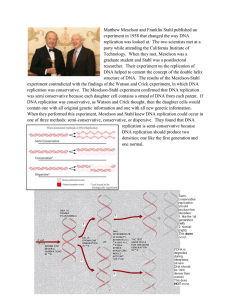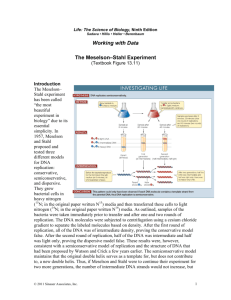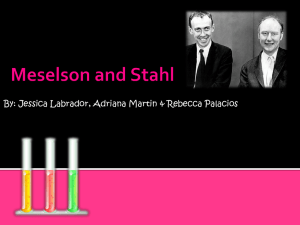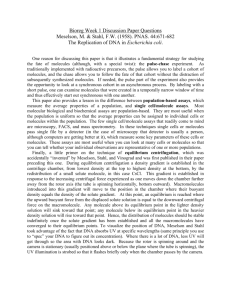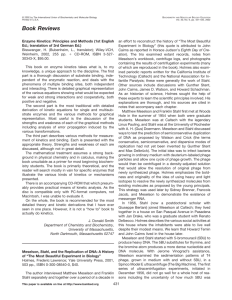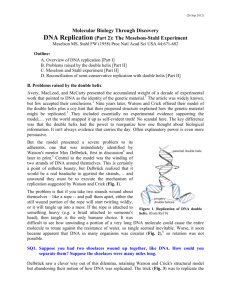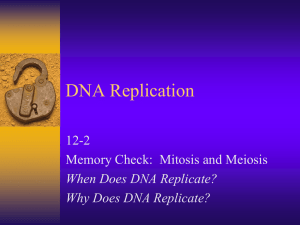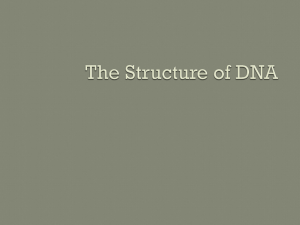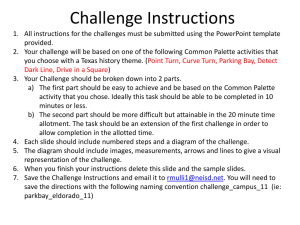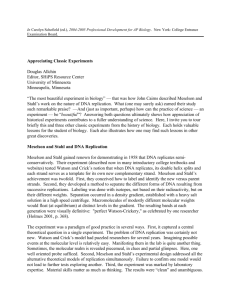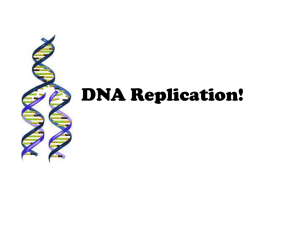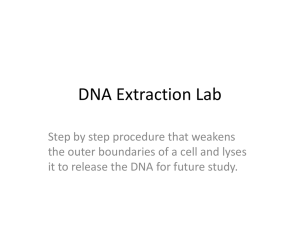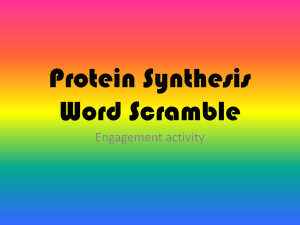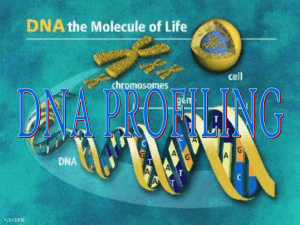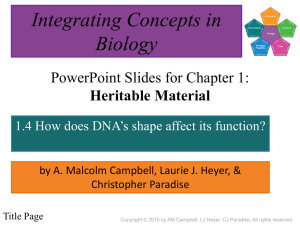2.7 * DNA replication, transcription, and translation
advertisement
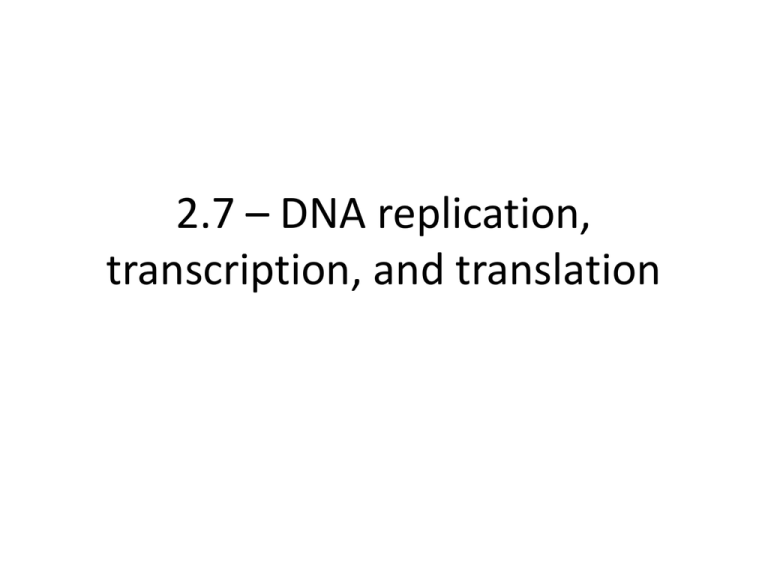
2.7 – DNA replication, transcription, and translation DNA Replication DNA Replication animation – Focus only on the role of helicase and DNA polymerase…the other enzymes are HL knowledge. – Make an annotated version of this on paper! How do we know that this is how DNA replicates itself? The Meselson and Stahl experiment In order for cell division to occur, DNA must be duplicated to ensure that progeny cells have the same genetic information as parent cells. The process of duplicating DNA is termed replication. The Meselson-Stahl experiment sought to understand the mechanism of replication. The Meselson and Stahl experiment Did replication occur in a conservative fashion, a semi-conservative fashion, or in a dispersive fashion? The Meselson and Stahl experiment They grew E. coli in a medium containing “heavy” nitrogen, 15N, for a number of generation. They then transferred the bacteria to a 14N medium. Samples of the bacteria were taken over a period of time and separated by density gradient centrifugation, a method in which heavier molecules settle further down in a centrifuge tube than lighter ones. The Meselson and Stahl experiment A single band of DNA at the start (0 generations) had a density of 1.742 g/cm3. The main band of DNA after four generations had a density of 1.710 g/cm3. Explain how DNA with a lower density had been produced by the bacteria. The Meselson and Stahl experiment Estimate the density of DNA after one generation. The Meselson and Stahl experiment Explain whether the density of DNA after one generation falsifies any of the three possible mechanisms for DNA replication. The Meselson and Stahl experiment Describe the results after two generations, including the density of DNA. The Meselson and Stahl experiment Explain whether the results after two generations falsify any of the three possible mechanisms for DNA replication. The Meselson and Stahl experiment Explain the results after three and four generations.
